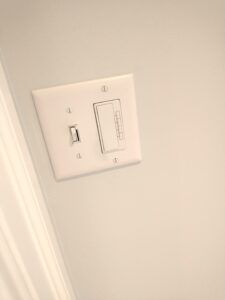In today’s world, energy efficiency is more important than ever. Not only does it help reduce our environmental impact, but it also saves money on utility bills. When it comes to lighting, there are several energy-efficient controls available that can make a significant difference in both energy consumption and convenience. In this blog post, we will explore the benefits and functionality of dimmers, timers, and occupancy sensors, and how they contribute to energy-efficient lighting solutions.
Dimmers
Dimmer switches allow users to adjust the brightness of a light fixture, providing the flexibility to set the desired level of illumination for any occasion. By reducing the intensity of light output, dimmers not only create ambiance but also save energy. When lights are dimmed, less electricity is consumed, resulting in lower energy bills and extended bulb life. Dimmers are particularly useful in areas where lighting needs vary, such as living rooms, dining rooms, and bedrooms. Additionally, dimmers can help reduce glare and eye strain, enhancing comfort and visual appeal.

Timers
Timers enable users to schedule when lights turn on and off automatically, allowing for energy savings and added convenience. By programming lights to operate only when needed, homeowners can avoid unnecessary energy consumption during times of absence or when natural light is sufficient. Timers are especially beneficial for outdoor lighting, security lighting, and holiday decorations, ensuring lights are on only, when necessary, without the need for manual intervention. Additionally, timers can enhance home security by creating the appearance of occupancy when residents are away, deterring potential intruders.
Occupancy (Motion) Sensors
Occupancy sensors, also known as motion sensors, detect motion within a defined area and automatically turn lights on or off accordingly. These sensors are ideal for spaces where occupants may forget to turn lights off when leaving, such as hallways and bathrooms. By eliminating the need for manual operation, occupancy sensors prevent energy waste and promote convenience. Moreover, occupancy sensors enhance safety by ensuring adequate lighting in areas of activity, reducing the risk of accidents and falls. Advanced occupancy sensors may also feature daylight harvesting capabilities, adjusting lighting levels based on natural light availability to further optimize energy efficiency.
In conclusion, energy-efficient lighting controls such as dimmers, timers, and occupancy sensors offer numerous benefits for homeowners seeking to reduce energy consumption, save money, and enhance convenience. By incorporating these controls into their lighting systems, homeowners can customize their lighting experience, improve comfort, and contribute to a more sustainable future. Whether it is dimming lights for a cozy evening at home, scheduling outdoor lights to illuminate pathways, or automatically turning off lights in unoccupied rooms, the versatility and efficiency of these lighting controls make them invaluable additions to any home.
If you would like to upgrade your home to include any of these options, give our office a call at 816-246-5826!
